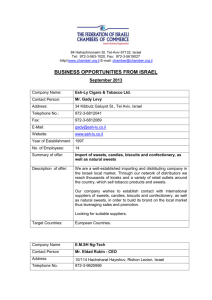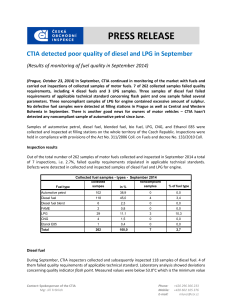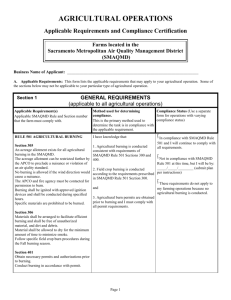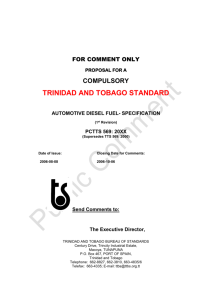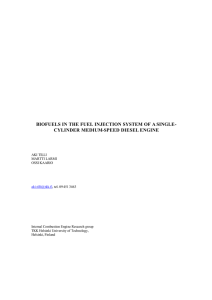FUELS –FUEL OIL SYSTEM A. FUELS What do fuels come from
advertisement
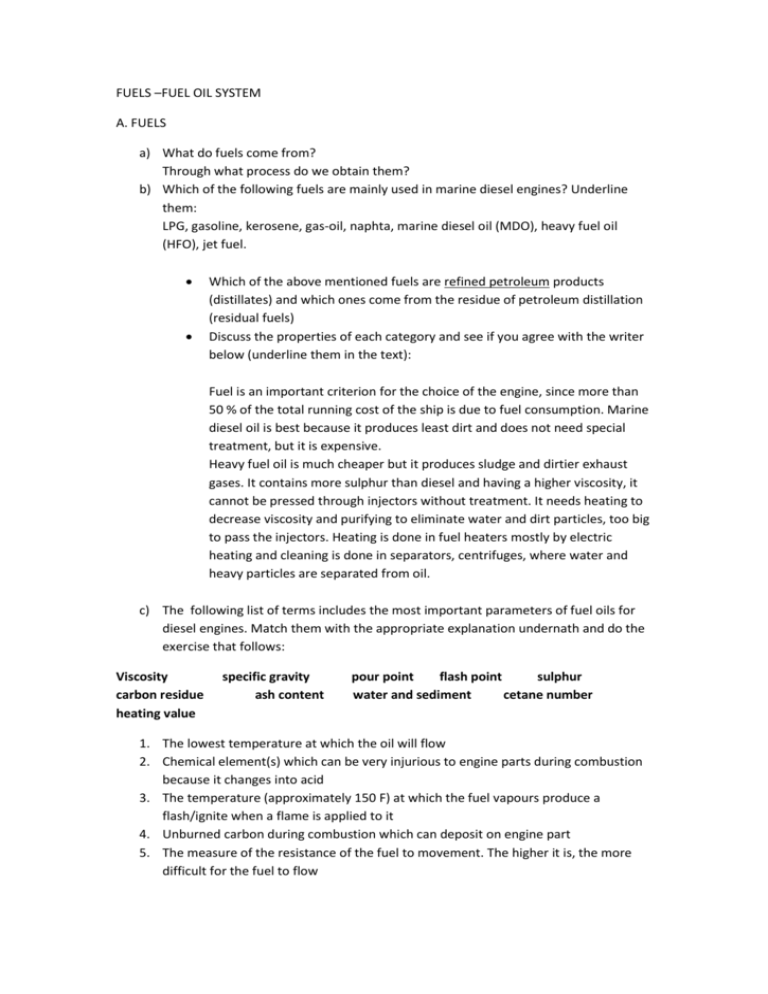
FUELS –FUEL OIL SYSTEM A. FUELS a) What do fuels come from? Through what process do we obtain them? b) Which of the following fuels are mainly used in marine diesel engines? Underline them: LPG, gasoline, kerosene, gas-oil, naphta, marine diesel oil (MDO), heavy fuel oil (HFO), jet fuel. Which of the above mentioned fuels are refined petroleum products (distillates) and which ones come from the residue of petroleum distillation (residual fuels) Discuss the properties of each category and see if you agree with the writer below (underline them in the text): Fuel is an important criterion for the choice of the engine, since more than 50 % of the total running cost of the ship is due to fuel consumption. Marine diesel oil is best because it produces least dirt and does not need special treatment, but it is expensive. Heavy fuel oil is much cheaper but it produces sludge and dirtier exhaust gases. It contains more sulphur than diesel and having a higher viscosity, it cannot be pressed through injectors without treatment. It needs heating to decrease viscosity and purifying to eliminate water and dirt particles, too big to pass the injectors. Heating is done in fuel heaters mostly by electric heating and cleaning is done in separators, centrifuges, where water and heavy particles are separated from oil. c) The following list of terms includes the most important parameters of fuel oils for diesel engines. Match them with the appropriate explanation undernath and do the exercise that follows: Viscosity carbon residue heating value specific gravity ash content pour point flash point sulphur water and sediment cetane number 1. The lowest temperature at which the oil will flow 2. Chemical element(s) which can be very injurious to engine parts during combustion because it changes into acid 3. The temperature (approximately 150 F) at which the fuel vapours produce a flash/ignite when a flame is applied to it 4. Unburned carbon during combustion which can deposit on engine part 5. The measure of the resistance of the fuel to movement. The higher it is, the more difficult for the fuel to flow 6. Non-combustible solid material in the fuel which scratches the rubbing surfaces it comes in contact with 7. The amount of heat (e.g btu) given off on complete combustion of one pound of fuel 8. A measure of the density or weight of the fuel. It also serves as a rough check on viscosity, carbon content and other qualities 9. An indication of the quality of the ignition of the fuel. The higher the rpm of the engine, the higher the required cetane number 10. Content in water and solid particles. The higher it is, the more possible it is to cause erratic combustion and corrosion







